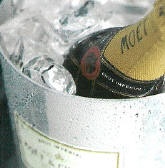 |
|
 |
 |
 |
|
|
New Orleans, Louisiana |
844-442-7847 |
|
|
Awaiting Your Return From Shore |
Swathed in the romance of
pirates, voodoo and Mardi Gras, Louisiana is undeniably special. This is the
land of the rural French-speaking Cajuns, descended from 18th century French
Canadian refugees, and the haughty Creole aristocrats of jazzy, sassy New
Orleans. In 1718 New Orleans was nothing but a set of shacks on a
disease-ridden marsh. Its prime location led to rapid development, and by
the end of the 18th century, the port was flourishing, the haunt of
smugglers, gamblers, prostitutes, pirates and escapees from the French
Revolution and West Indian slave rebellions. New Orleans was already a
diverse and many-textured city when it experienced two quick-fire changes of
government, passing Spanish to French |
Awaiting Your Return From Shore |
|
|
|
|
|
|
||
|
|
|
|
|
Complimentary Spirits Await |
Return to Your Suite and Sail Away to The Next Adventure |
Entertainment and Dancing Await You |
|
|
|
|
|
844-442-7847 |







